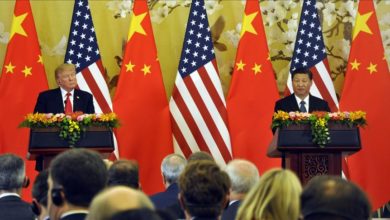World Bank warns: China’s exports are collapsing
The extent of the economic downturn surprised even experts. The slump comes at a bad time for China.

Poor global demand and corona lockdowns in China have caused Chinese foreign trade to collapse unexpectedly. According to customs officials in Beijing, exports calculated in US dollars fell by 8.7 percent compared to the same month last year. It was the second monthly decline in a row.
Imports fell by 10.6 percent and thus also much more sharply than forecast by experts. With a minus of 9.5 percent, foreign trade developed even worse than the 9.3 percent slump at the beginning of the pandemic in May 2020.
Zero Covid policy makes production difficult
A major reason for the decline in exports is weak global demand due to high inflation and energy prices as a result of the Russian war of aggression in Ukraine. But the disruption to the supply chains in China due to the restrictions resulting from China’s strict zero-Covid policy is also making production more difficult.
The widespread lockdowns and the ongoing real estate crisis are burdening the second largest economy. This also dampens domestic demand, which explains the fall in imports. In October, imports fell by 0.7 percent, while exports fell by 0.3 percent for the first time in more than two years. On Wednesday, the State Council announced some easing steps, read more about it here.
The downturn in Chinese foreign trade is also affecting German exporters. German exports to China fell by 17.5 percent. China’s exports to Germany also fell by 14.4 percent. The drop in Chinese exports to the US was even larger, down 25.4 percent, while China imported 7.3 percent less from the US.
Growth target will probably be clearly missed
According to experts, the weakening Chinese economy will find it difficult to cope with the decline in foreign trade because export growth has been an important pillar of the Chinese economy since the pandemic began almost three years ago. Experts have been expecting for some time that the government will clearly miss its growth target of 5.5 percent for this year.
With the lockdowns – which Japanese financial group Nomura estimates have affected cities and regions that contribute up to a fifth of gross domestic product in normal times – the economy is unlikely to have grown much in November. Only slightly more than two percent are expected for the fourth quarter. After growth of 8.1 percent in the previous year, the World Bank only expects an increase of 2.8 percent in China this year.
In order to stimulate the economy, the Chinese government has again invested heavily in infrastructure, lowered interest rates, granted tax rebates and made it easier to buy real estate. However, the largest wave of corona infections in the People’s Republic since the beginning of the pandemic almost three years ago and the following largely zero-Covid restrictions have limited the effectiveness of the stimulus measures.
Facilitating quarantine and compulsory testing
A few weeks ago, and especially after the wave of major protests against the tough Covid measures at the end of November, the authorities introduced the first easing of quarantine and compulsory testing. In this way, infected people can also isolate themselves at home. In addition, a number of metropolises no longer require current negative PCR tests in many places – such as at the entrances to supermarkets and residential complexes.
After a meeting on economic policy chaired by state and party leader Xi Jinping the day before, the Politburo emphasized in a statement on Wednesday that it wanted to pursue “stability”. A proactive budgetary and prudent monetary policy should be implemented. The measures to prevent mass corona infections and control the virus would have to be “optimized”. It is important to vigorously strengthen confidence in the market and to stabilize growth, employment and prices.
Nonetheless, the World Bank calls for further structural reforms and warns of financial risks. “In the medium term, China’s economy is still confronted with a structural downturn,” it said in an analysis. “Potential growth is on a declining trend reflecting unfavorable demographics, sluggish manufacturing growth and increasing constraints of a debt-driven growth model.”
Protests in China: Party leadership threatens to “tough crackdown”



